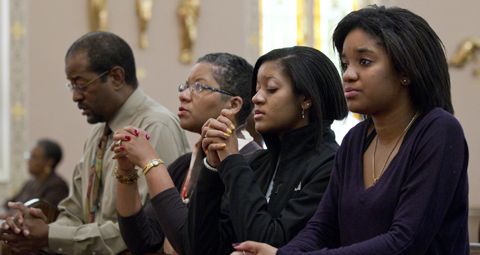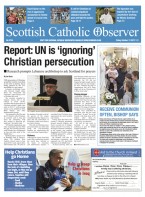October 6 | ![]() 0 COMMENTS
0 COMMENTS ![]() print
print

Race is not irrelevant in the Catholic Church
In a letter from America, BRANDON MCGINLEY looks a segregation —BY BRANDON MCGINLEY
A couple of years ago, I had a conversation with a black Protestant pastor about tensions between the ‘black church’ and the ‘white church’ in America. Enduring patterns of de facto geographic segregation, in combination with the challenging racial history of Protestantism in this country, mean that these stark terms describe a real divide—not just of cultures and attitudes, but even of congregations.
Most black Protestants attend distinctively black churches led by black pastors and filled only with black people; to the extent one sees racial diversity in non-black Protestant churches, one can’t escape the notion that people of colour are intruding on a white space.
This idea of ecclesial communities divided by race was strange for me as a Catholic. In reflecting on that conversation, I somewhat smugly contrasted the Catholicity of the Church with the enduring racial divisions in American Protestantism. “The idea of a ‘black church’ and a ‘white church’ wouldn’t even make sense in Catholicism,” I thought to myself. “Thank goodness for our unity and universality.”
But these triumphal musings were really only true in a strictly juridical sense. Yes, Catholics are unified in one ecclesial body under one Holy Father. Yes, there are no intra-Catholic administrative distinctions based solely on race in the way there are entire African-American Protestant denominations. But no, it is frighteningly naive to suppose that there are no deep-seated racial divides in the Catholic Church, specifically in America.
Alongside my sister, a photographer, I am working on a book about the Catholic history and present of our hometown of Pittsburgh. We’re visiting beautiful Catholic churches to tell the story of the Faith in our corner of the world. As part of this project, I visited a black Catholic parish for the first time.
That last sentence requires some unpacking. First of all, the fact that I can describe a parish as distinctively black destroys the conceit that race is irrelevant in Catholicism. The de facto segregation of American cities affects the Church’s geography-based parish model just as surely as it does the Protestants.
It goes deeper than that, though. This black Catholic parish—a status made essentially official by the fact it is consecrated in the name of an African saint, Benedict the Moor—sits within sight of another Catholic parish. The Church of the Epiphany, while not officially a ‘white church,’ is, well, a church full of white people. And Benedict the Moor is a church full of black people.
But let’s return to that sentence again, and back up a little more to the words ‘for the first time.’ I had never seen a Catholic church that emphasised the colours red, green, and black in its design and decor.
I had never seen a Catholic church set up to accommodate the distinctive liturgical expressions of African-American Christianity. And I had never seen—let me stress this—I had never seen black saints depicted in the windows or the statuary of a Catholic Church. No Martin de Porres. No Charles Lwanga. No Josephine Bakhita.
The vast majority of American Catholic churches present to the faithful a Church that is entirely white. Based on the artwork in our churches, one would think that the Communion of Saints is made up only of Europeans.
We need to see black and brown faces in our churches—not as tokens, but as representations of the capital-t Truth of the universality of the Catholic Faith, and as reminders that solidarity crosses all racial lines. But perhaps even more importantly, Catholic families need to bring black and brown faces into their homes, into the domestic Church.
Of course, ideally those faces would belong to living and breathing human beings. The enduring reality of segregation makes this harder than it sounds, but I know that I could do better in this regard.
Let us remember, though, that the saints are quite alive—more alive than we are. It is easy to bring depictions of non-white saints into the home.
We are lucky to have a Mexican grocery in our neighbourhood that sells devotional candles; our last purchase was St Martin de Porres, and he now looks over our living room.
Celebrate the feast of indigenous saints Kateri Tekakwitha or Juan Diego. Hang a portrait of St Augustine as he actually was—a North African Berber. Show children depictions of the Holy Family from other cultures. These are the small but meaningful things we can do in our families and parishes to make Catholicism Catholic again.











